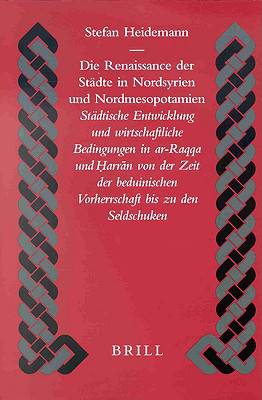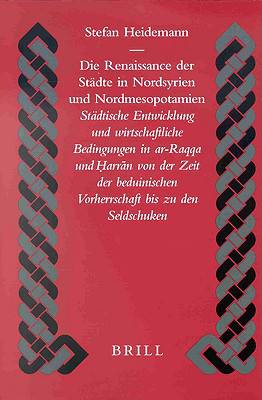
- Afhalen na 1 uur in een winkel met voorraad
- Gratis thuislevering in België vanaf € 30
- Ruim aanbod met 7 miljoen producten
- Afhalen na 1 uur in een winkel met voorraad
- Gratis thuislevering in België vanaf € 30
- Ruim aanbod met 7 miljoen producten
Zoeken
Die Renaissance Der Städte in Nordsyrien Und Nordmesopotamien
Städtische Entwicklung Und Wirtschaftliche Bedingungen in Ar-Raqqa Und Ḥ̣arrān Von Der Zeit Der Beduinischen Vorherrschaft Bis Zu Den Seldschuken
Stefan Heidemann
€ 459,45
+ 918 punten
Omschrijving
The period between 950 and 1150 A.D. is regarded as "turning point in the history of the Islamic Culture" from the Early Islamic to the Late Medieval civilization. What led to the urban decline in between and the later recovery? Ḥ̣arrān and al-Raqqa serve as paradigma for the development in Northern Syria and Northern Mesopotamia.
The collapse of the ʿAbbasid state left the region cornered between Buyids, Fatimids and Byzantines to the nomadic tribes not acquainted with urban culture. After 1086 A.D., measures undertaken by the Seljuqs in order to safeguard their hegemony led to a renaissance of cities inspite of permanent power struggles and the crusades. They based their rule on fortified places. The financing of the army led to the distribution of land as fiefs (iqtaʿ) and subsequently to a dislodgement of nomads and a recultivation of former agricultural land. Cash money for the treasury was generated by skimming long distance trade; this in turn required public security on the roads. An analysis of the monetary circulation according to archaeological and literal evidence serves as measure for the economic recovery. A corpus of the coin production in al-Raqqa, ḥarrān and al-Ruha'/Edessa supplements the textual sources.
The collapse of the ʿAbbasid state left the region cornered between Buyids, Fatimids and Byzantines to the nomadic tribes not acquainted with urban culture. After 1086 A.D., measures undertaken by the Seljuqs in order to safeguard their hegemony led to a renaissance of cities inspite of permanent power struggles and the crusades. They based their rule on fortified places. The financing of the army led to the distribution of land as fiefs (iqtaʿ) and subsequently to a dislodgement of nomads and a recultivation of former agricultural land. Cash money for the treasury was generated by skimming long distance trade; this in turn required public security on the roads. An analysis of the monetary circulation according to archaeological and literal evidence serves as measure for the economic recovery. A corpus of the coin production in al-Raqqa, ḥarrān and al-Ruha'/Edessa supplements the textual sources.
Specificaties
Betrokkenen
- Auteur(s):
- Uitgeverij:
Inhoud
- Aantal bladzijden:
- 548
- Taal:
- Duits
- Reeks:
- Reeksnummer:
- nr. 40
Eigenschappen
- Productcode (EAN):
- 9789004122741
- Verschijningsdatum:
- 26/04/2002
- Uitvoering:
- Hardcover
- Formaat:
- Genaaid
- Afmetingen:
- 164 mm x 240 mm
- Gewicht:
- 1374 g

Alleen bij Standaard Boekhandel
+ 918 punten op je klantenkaart van Standaard Boekhandel
Beoordelingen
We publiceren alleen reviews die voldoen aan de voorwaarden voor reviews. Bekijk onze voorwaarden voor reviews.








